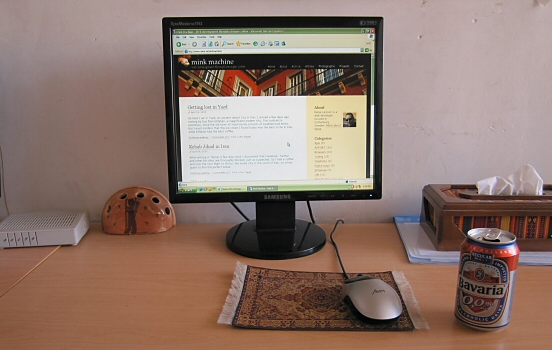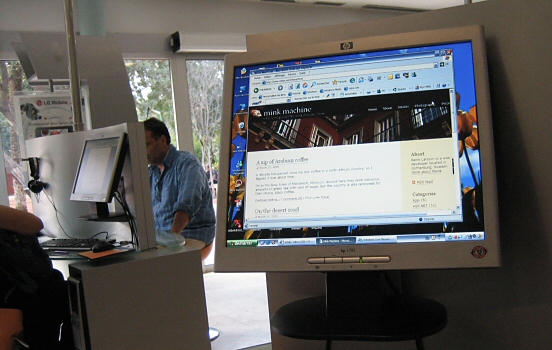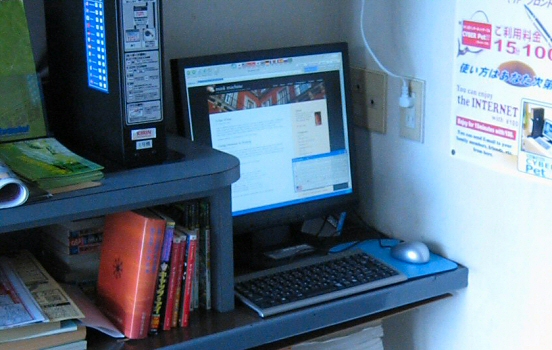Tim Ferriss is the author of The 4-Hour Workweek, first published in 2007. After his speech at SXSW the same year, the word quickly spread through the blogosphere and the book soon became extremely popular among aspiring digital nomads.
The subtitle is “Escape 9-5, Live Anywhere, and Join the New Rich”, which of course holds a certain allure with many travelers. Tim Ferriss appears to be like a human guinea pig who tries a lot of different stuff on himself, noting the result and going with the best option. In that he reminds me of the old quote often attributed to Bruce Lee: “Adapt what is useful, reject what is useless, and add what is specifically your own.”
Ferriss covers a lot of topics on how to utilize this “lifestyle design”. While some of the advice is great, I don’t agree with all the stuff he mentions, so for me it’s a question of cherry-picking the good things (as with most ideas out there). One would do well to remember the context of the book’s creation. The early 2000s was a period of frenetic digital activity embracing “more is more”. In those busy days, long days at the office and near-burnout lifestyle was sometimes worn as a badge of honor.
Many seem to label the book as a productivity guide, which is fine, but I believe that the larger message is about rethinking the meaning of work. Are you productive or just busy? People don’t necessarily want to be millionaires, they just want to live like a millionaire.
While the book contains a lot of life hacks and productivity tips, the main story arc is on a more philosophical note. Liberate your time to be able to focus on the things you love. Choose actively to live life to its fullest and follow your own path, even if you may not know the entire outline yet (then again, who does?).
 Creative session at a motel in California.
Creative session at a motel in California.
The concept of being a digital nomad is a recurring theme, as one would expect since this is one of the best ways to create a freewheeling lifestyle. There were of course digital nomads out there even before the term existed. I remember reading travel blogs a decade ago, where dusty backpackers sat with their laptop at the balcony in a faraway land. The palm trees were swaying in the background (as far as a low-rez jpeg could sway, that is), as they wrote short posts of their experiences on the location. It felt very exciting at the time to read their stories online, almost instantaneously, and writing feedback in the comments. (I feel a thousand years old by typing this, but those were different times.)
 Writing a blog post on a dubious computer in Yazd, Iran.
Writing a blog post on a dubious computer in Yazd, Iran.
Back then blogging was being scowled at by traditional news outlets, but this was soon about to change. I remember sitting at a hotel room in San Francisco in 2005, watching the CNN cover of the hurricane Katrina flooding in Louisiana. Unable to send “real” reporters into the disaster area, the news reporters browsed through travel blogs and Flickr photos during live broadcast.
But once you look away from the inviting photos, the reality behind it all can be tough at times. The laptops were quite heavy ten years ago and the online speed was ridiculous compared to the standards of today. It felt somewhat sad to spend time in a beautiful foreign country while sitting in front of a laptop, uploading jpegs on a modem so slow it seemed to be sending the IP packages by homing pigeons.
 Writing a blog post in Marrakesh, Morocco.
Writing a blog post in Marrakesh, Morocco.
My travels have definitely had a fair share of this. Sitting alone at hotel rooms in foreign cities, writing on a laptop. I even remember sitting on the deck of a boat going down the Nile river, busy writing in my notebook while my friends were admiring the sunset. But fortunately I usually come to my senses after a while, fold the computer and hit the streets for new adventures. That is one of the reasons why my blog posts written on location usually are quite short.
Needless to say, digital nomads needs to keep track of this on top of their business activities. It can be hard to keep up with constantly being on the move, trying to keep up the social connections, eat healthy and exercise regularly.
Long-term remote-work travel may seem like a golden goose sitting on a shiny unicorn, but there are several pitfalls. Will you stop appreciating travel because you are doing it all the time? Travel fatigue may sound like a luxury problem, but it connects back to another point made by Ferriss. If you manage to free yourself from the treadmill, then what? Will you be tired of sitting alone on a beach, while all your friends back home are at work? The time after the liberation clearly needs a strategy as well.
Lifestyle design is definitely a space to watch, but be careful to not let it be something which could ultimately prevent you from enjoying life.
 Writing a blog post somewhere in Hiroshima, Japan.
Writing a blog post somewhere in Hiroshima, Japan.
Having said that, I still definitely recommend buying the book The 4-Hour Workweek. Further reading in the same direction would be the other books by Tim Ferriss: The 4-Hour Body from 2010, with a lot of advice for diet and training, as well as The 4-Hour Chef from 2012, which includes advice for accelerated learning (covering examples in cooking and languages).
For more inspiration on your journey, you may also be interested in the works of Richard Koch (The 80-20 principle is a whole book devoted to one of the principles mentioned by Ferriss), Tony Robbins (start with Unlimited Power, even though it is less business-oriented than The 4-Hour Workweek), Richard Branson (check out Like a Virgin, which is more business-oriented if you prefer that), Brene Brown (Daring Greatly), Simon Sinek (Start With Why), and Derek Sivers (Anything You Want).
Comments
No comments yet.
Leave a reply